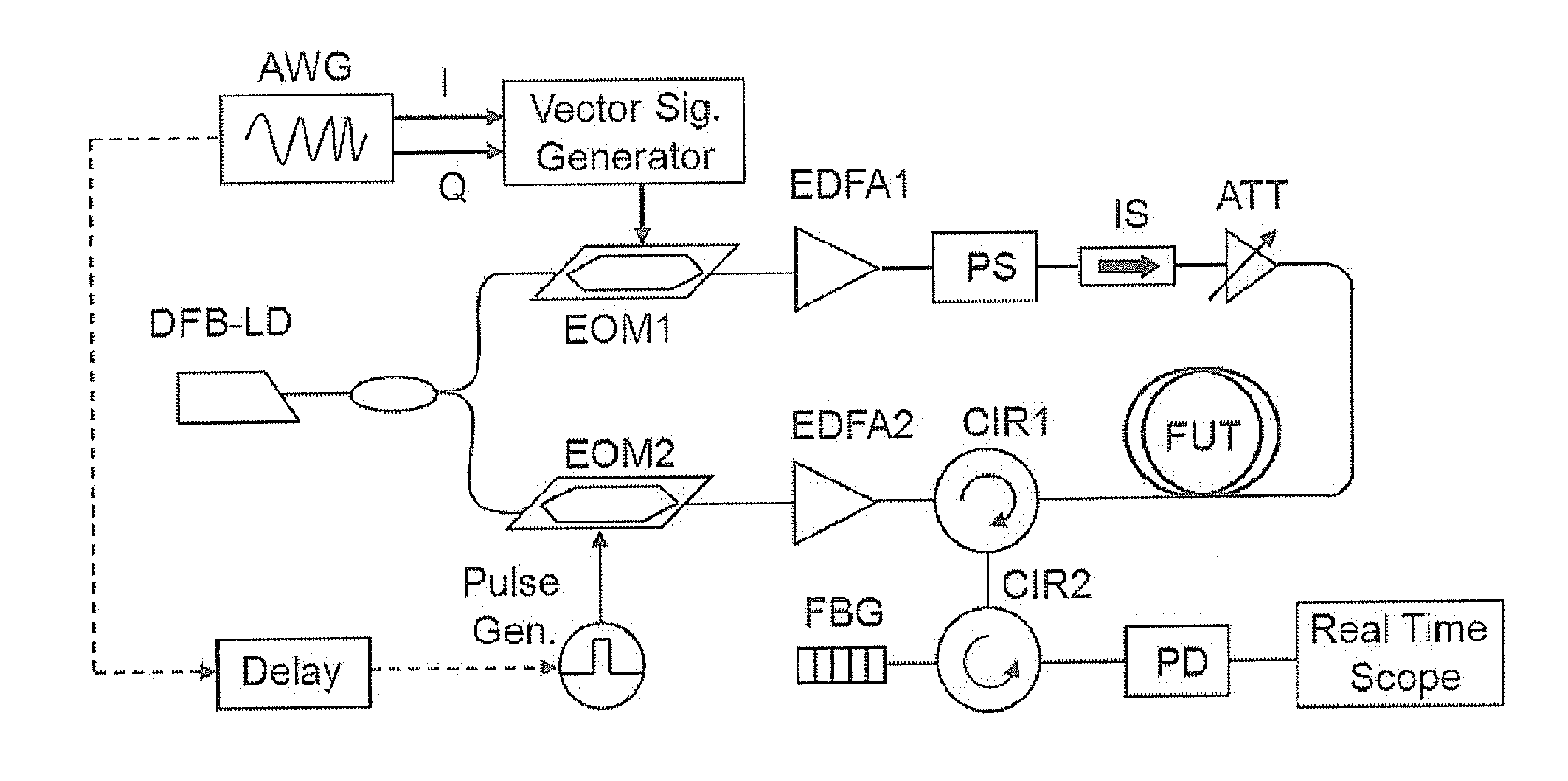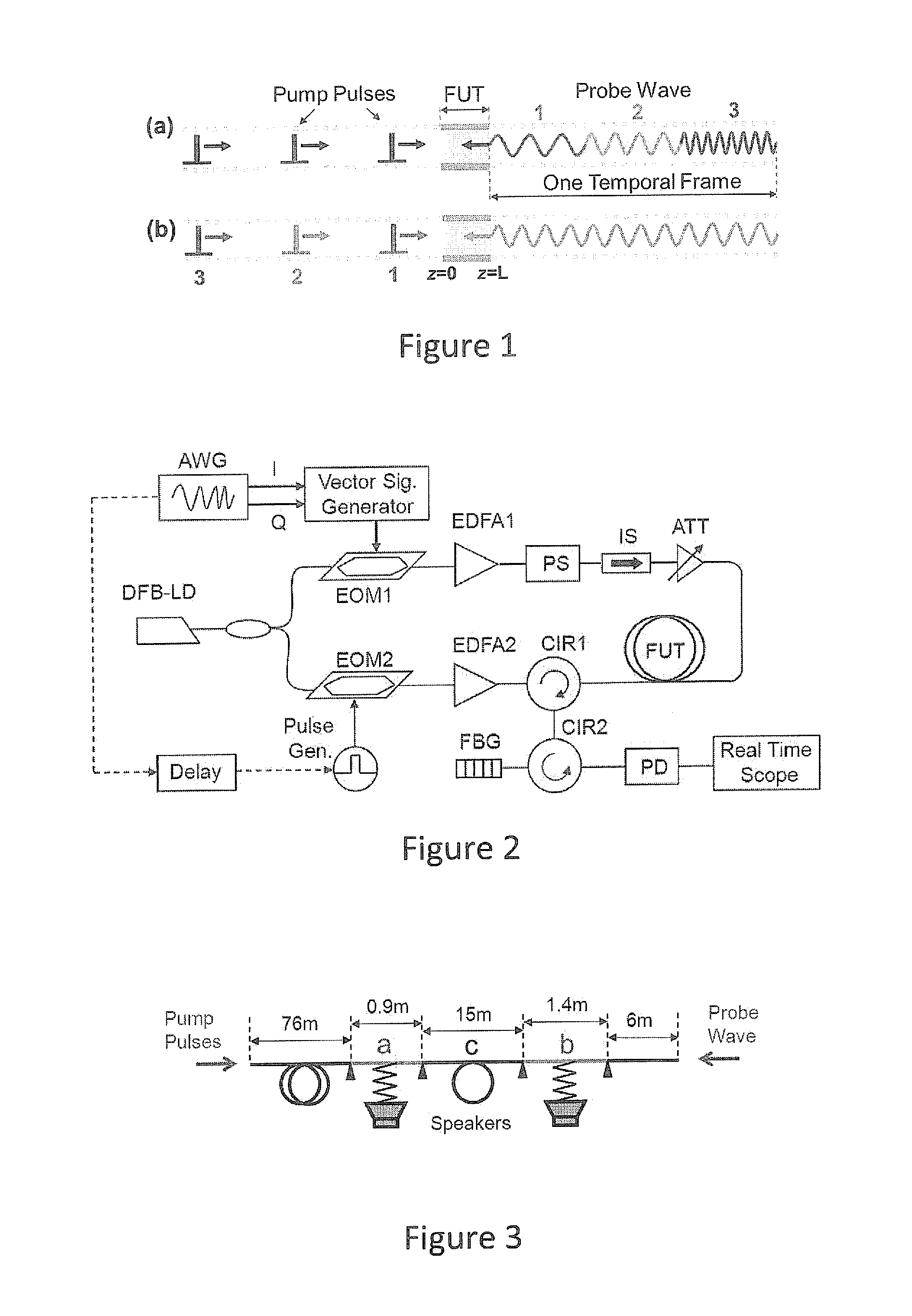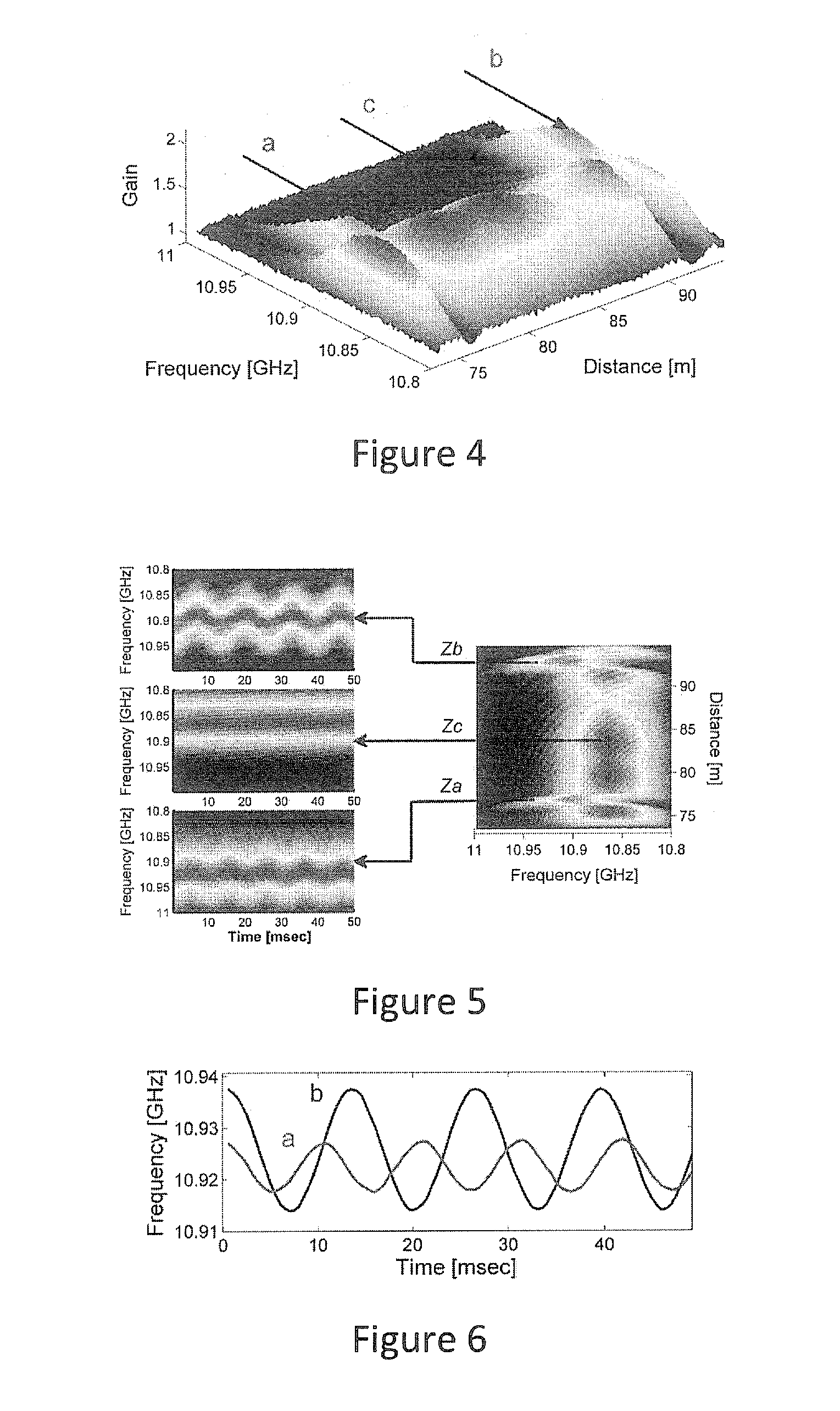Fast brillouin optical time domain analysis for dynamic sensing
a dynamic sensing and optical time domain technology, applied in the field of dynamic brillouin sensing, can solve problems such as fair slow procedur
- Summary
- Abstract
- Description
- Claims
- Application Information
AI Technical Summary
Benefits of technology
Problems solved by technology
Method used
Image
Examples
Embodiment Construction
[0014]The present invention, in embodiments thereof, suggests generating both the pump and probe waves from the same highly coherent laser by using an electro-optic modulator to create a frequency difference between the pump (directly derived from the laser) and probe (down shifted in frequency from that of the laser by a controllable difference on the order of the BFS˜11 GHz). The modulator is normally driven by a relatively slowly sweeping YIG- or VCO-based electronic synthesizer, whose frequency is scanned at a rate on the order of 1 ms per frequency step (or slower), to cover the frequency span of interest (100's of MHz). Instead, we propose the use of an arbitrary waveform generator (AWG). While the pump pulse frequency is maintained at a fixed value, the probe frequency can be changed every Tround—trip=1 μs (for a 100 m long fiber).
[0015]This very fast change may be obtained by first writing into the deep memory of the AWG a numerical description of 1 μs long sine wave of the ...
PUM
 Login to view more
Login to view more Abstract
Description
Claims
Application Information
 Login to view more
Login to view more - R&D Engineer
- R&D Manager
- IP Professional
- Industry Leading Data Capabilities
- Powerful AI technology
- Patent DNA Extraction
Browse by: Latest US Patents, China's latest patents, Technical Efficacy Thesaurus, Application Domain, Technology Topic.
© 2024 PatSnap. All rights reserved.Legal|Privacy policy|Modern Slavery Act Transparency Statement|Sitemap



